Covering material for grapes for the winter is required when growing it in cold climates. In this case, the plant must be prepared for winter. When sheltering it ahead of schedule, immunity and crop quality will decrease. When choosing a material, it is important to consider the characteristics of the climate and the moodiness of the culture.
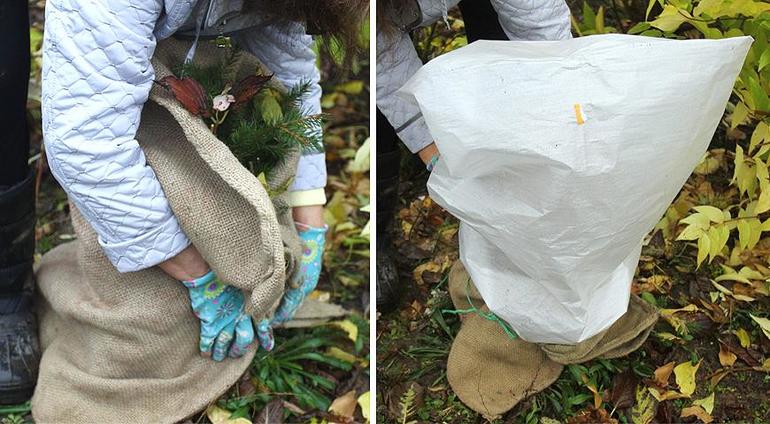
Content
The advantages of the method
Gardeners can grow varieties for extremely low conditions and without special covering materials for grapes for the winter. Here distinguish between such varieties:
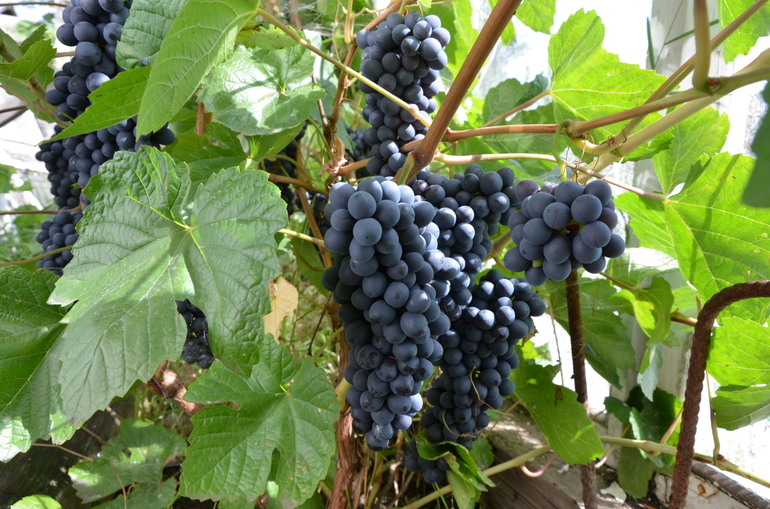
- Flame-free grow at temperatures up to -40 degrees.
- Conventionally, without varieties, varieties withstand frosts of 30 degrees.
- Shelter varieties are resistant to frost within 23 degrees.
Procedure and errors
For the well-being of the shrub in the winter, the vine with the support is removed and pinned to the ground, and then heat-insulated. Choosing materials for sheltering grapes for the winter and performing appropriate procedures, gardeners make the following mistakes:

- Shelter made at the wrong time. It is necessary to carry out the procedure with stable frosts. In early October cover a plant not worth it due to the fact that it is not particularly prepared, and the result will be a warming up.
- Uneven shelter is also possible. Although the vine can withstand very low temperatures, the roots should be warm. For good condition in winter, it is necessary to shelter the vine with the soil. Otherwise, the result will be deplorable: the roots will freeze, the plant will die. The film for sheltering the grapes is distributed evenly within a radius of 50 cm from the root neck.
- The preparation of the bed is done incorrectly. In order for the culture to tolerate frosts, the wood must mature. Otherwise, frost will damage the shoots, the bushes will weaken and become poorly resistant to frost.
 You may be interested in:
You may be interested in:Therefore, you need to make compounds of phosphorus and potassium, as they will help in strengthening the immune system and will contribute to the maturation of new branches. Nitrogen fertilizers are not required.
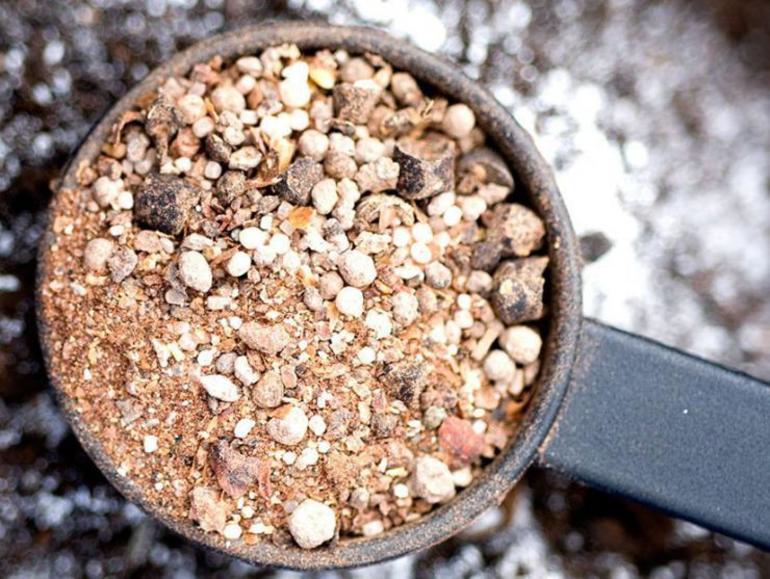
After harvesting, it is necessary to prune, remove the shoots and vines from the fruits. After this, a fungicide is applied, carrying out this by the method of irrigation. Before sheltering the grapes it is a little tempered, because at -7 degrees the plant's immunity will be strengthened. This will help him withstand severe frosts and not lose his basic properties.
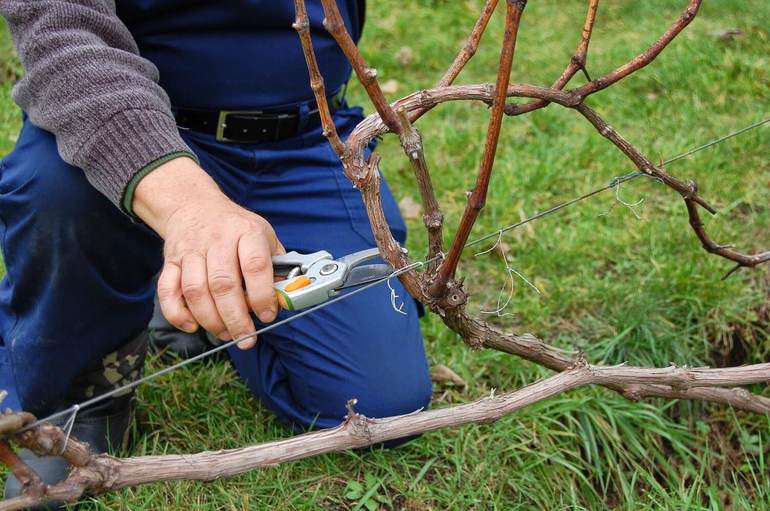
Shrub pruning should be done in the fall, simultaneously with the harvesting of cuttings. Covering material for grapes has a number of features, so it is worth considering the best options.
The most simplified method is to bend the plant to fill with peat. In this case, it is allowed to use soil. For this, the boards are laid under a bush, the vines are removed from the support. A bunch is formed from the shoots, and the plant is neatly laid on the boards. The vine is covered with slate or building roofing material.
As a result, the grapes will be under peat at a height of 20 cm. Due to such a shelter the grapes will be under reliable protection from severe frosts.But there is a significant drawback in the form of moisture transmission. Therefore, preference is given to other options.
Film application
Gardeners with experience try to cover grapes with a film. Its advantages are its strong structure and good heat conductivity. The following types of film are available:
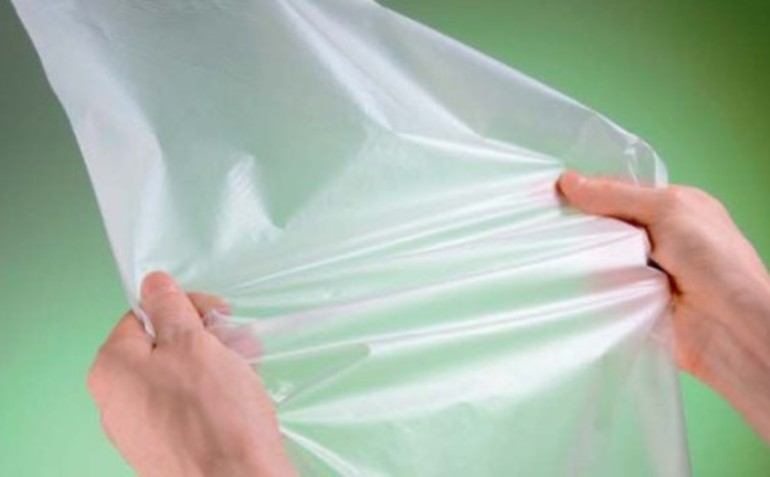
- Most often, polyethylene film is used for shelter. It is capable of holding 5 degrees of heat. With medium strength, it has a high level of water retention. But inside it is able to form a condensate that soaks the vine. Therefore, for better protection, it should be put under such materials as straw or dry leaves. They absorb moisture, coupled with heat insulation.
- Reinforced polyethylene is more durable, holds up to 8 degrees of heat. Good protection against cold weather. Increased strength allows the material to be more resistant to mechanical stress.
- A film of an airy-bumpy look. This is a very high quality and interesting material. Its advantage is that it holds 11 degrees of heat. Using such a film, it is not required to apply a water-absorbing layer.
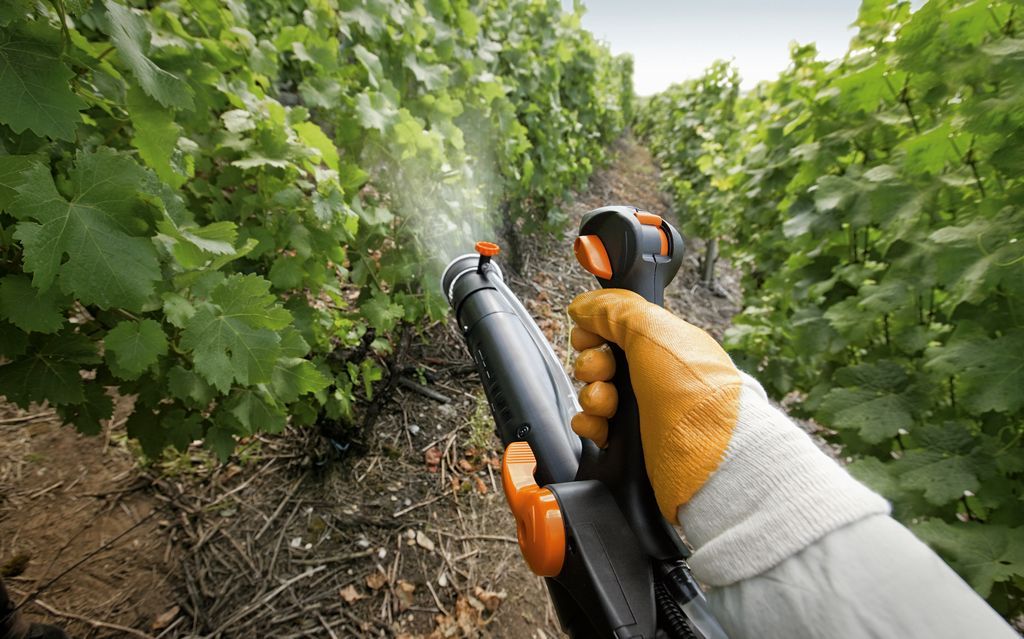 You may be interested in:
You may be interested in: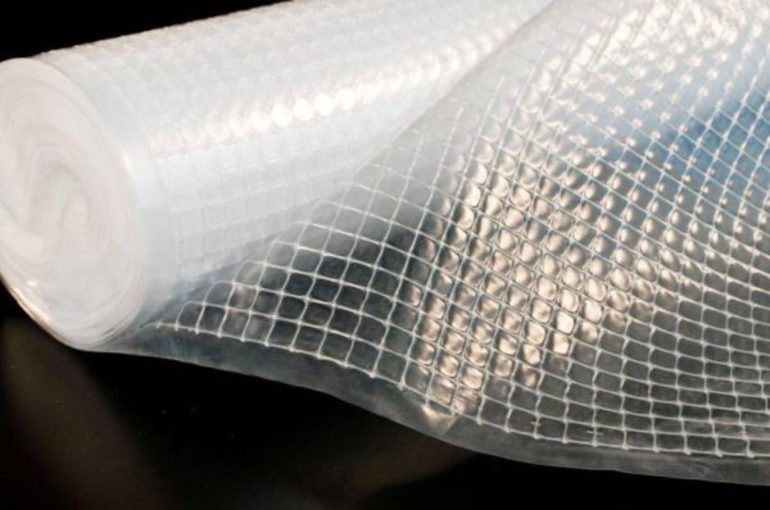
Spanbond Option
When changing frosts and thaws, another material must be preferred. Drops affect grapes very badly. The buds may not wake up on time, and the bush will die. Therefore, they use a new material - agrofibre called spunbond, which has some features.
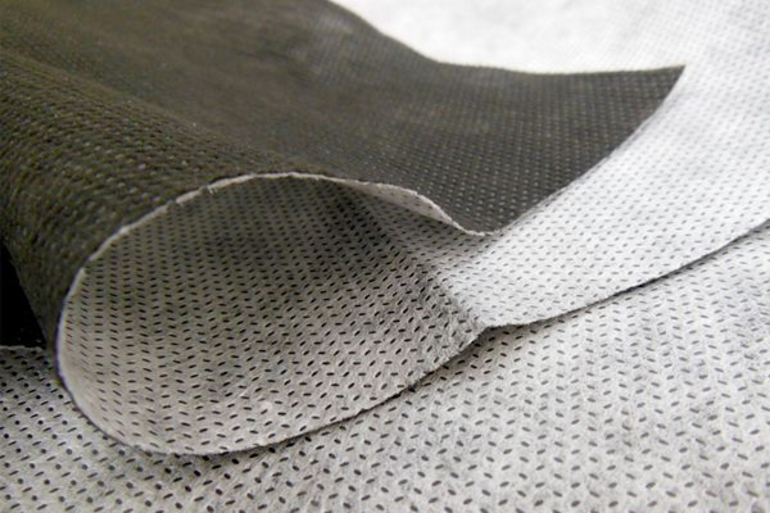
The first property is thickness. To cover garden crops, a material with a density of 42 g per 1 square. m and above. The vines of the grapes are tied, wrapped in material and laid on the boards. The disadvantage of such agrofibre is inadequate protection from very low temperatures, for this it is necessary to use additional insulation.
Spanbond also allows water to enter the plant.
Agrofibre and other components
In mild climates, the plant is covered with agrofiber. If you don’t have it at hand, then You can use the following materials:
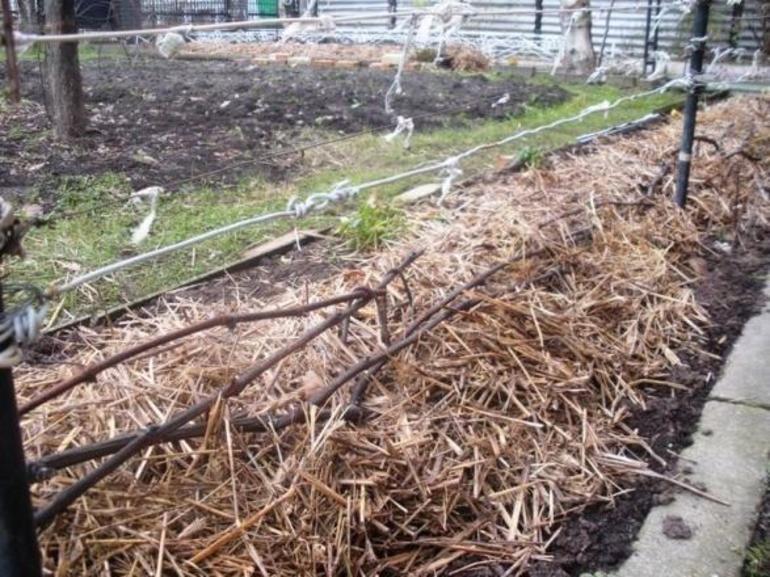
- Straw is very convenient in that it does not cake. But at the same time, rodents often begin to live there. And this is fraught with the fact that they will be able to get to the roots. Fighting them can be a non-trivial task. Additional insulation is required for protection.
- Dry leaves provide excellent thermal insulation, but are able to accumulate microorganisms. Before use, treatment with a fungicidal solution is needed. It is important to remember that dry foliage from fruit trees is not particularly suitable for mulching. A good combination comes with the film, it provides protection from the wind.
- Sawdust does not cake, retaining heat inside. Mulching of grapes goes well with conifers due to antiseptic properties. Together with sawdust, it is good to create protection against precipitation.
- Spruce-based lapnik is easy to use and has antiseptic properties. If you need to cover many bushes, then serious difficulties arise.
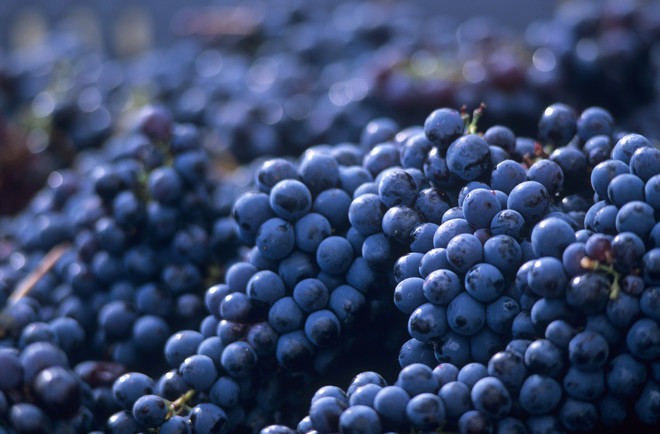 You may be interested in:
You may be interested in: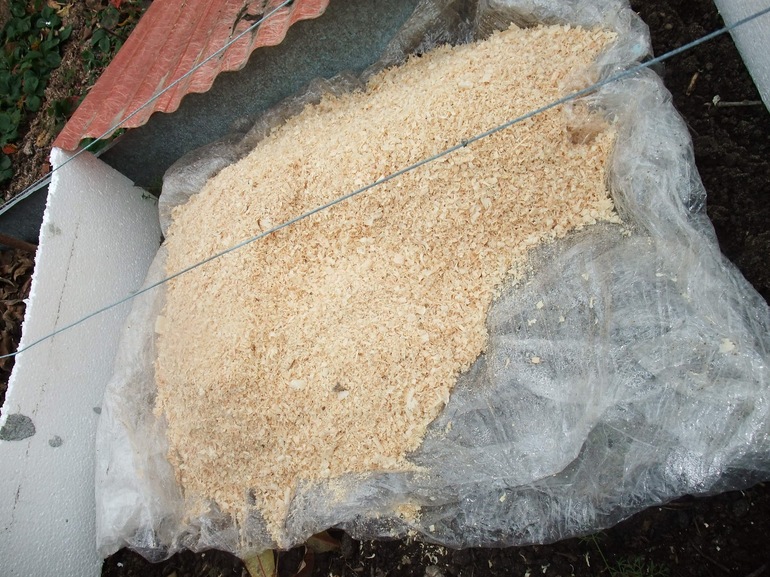
Another method is to use mini-frames for shelter from ordinary boxes.In the presence of wooden boards, the resulting construction should be used.
Is it possible to use snow for shelter - it all depends on the region. If the winter is mild on the territory, then snow is allowed to be used as a shelter. That snow was a heater, friability is necessary. With temperature extremes, such material can cause harm.
Will garden needles be suitable for shelter? Yes, it can be used, but preference should be given to other natural materials. Needles do not allow air to pass through; thermal insulation will be insufficient. Lapnik is better at letting air through.
As for the use of cellular polycarbonate, you need to choose a film look. At low temperatures, polycarbonate turns into a brittle material. Therefore, you need to purchase a high quality film. In order for the plant to tolerate the cold well, it is necessary to combine 2-3 materials.

 Non-covering winter-hardy grape varieties for Moscow region
Non-covering winter-hardy grape varieties for Moscow region How to keep the vine in winter
How to keep the vine in winter When can I transfer grapes to another place in the fall
When can I transfer grapes to another place in the fall How to cover and prepare grapes for the winter in the suburbs
How to cover and prepare grapes for the winter in the suburbs